new posts in all blogs
Viewing: Blog Posts Tagged with: 1932, Most Recent at Top [Help]
Results 1 - 10 of 10
How to use this Page
You are viewing the most recent posts tagged with the words: 1932 in the JacketFlap blog reader. What is a tag? Think of a tag as a keyword or category label. Tags can both help you find posts on JacketFlap.com as well as provide an easy way for you to "remember" and classify posts for later recall. Try adding a tag yourself by clicking "Add a tag" below a post's header. Scroll down through the list of Recent Posts in the left column and click on a post title that sounds interesting. You can view all posts from a specific blog by clicking the Blog name in the right column, or you can click a 'More Posts from this Blog' link in any individual post.
The Pastures of Heaven. John Steinbeck. 1932. 207 pages. [Source: Library]
This was not my first Steinbeck, but, even so I didn't know quite what to expect. Sometimes I love, love, love his work, and, other times I really almost hate it. The Pastures of Heaven is a collection of inter-connected short stories set in California, spanning several decades, I believe.
I wouldn't consider myself a fan of short stories--usually. The one notable exception being my love for L.M. Montgomery's short stories. But. I found the stories within The Pastures of Heaven to be compelling and entertaining. I read the book all in one sitting, it was just that hard to put down. True, it's not a huge book. But still, it's worth noting all the same. There was a time when I read many books quickly, but, that isn't the case anymore.
The characters. What can I say? Some I really liked. Some I really hated. Some I almost felt pity for more than anything else. I think overall one could easily say that Steinbeck created very human, very flawed, very authentic-feeling characters. Some stories were on the amusing side; others were almost melancholy. I liked the variety. Not just of the emotions within the stories and the types of stories, but, also of the narratives, of the narrators.
I was not a fan of Grapes of Wrath, but, I am a fan of Pastures of Heaven.
Favorite quote:
He knew that the people who were to be his new neighbors were staring at him although he could never catch them at it. This secret staring is developed to a high art among country people. They have seen every uncovered bit of you, have tabulated and memorized the clothes you are wearing, have noticed the color of your eyes and the shape of your nose, and, finally have reduced your figure and personality to three or four adjectives, and all the time you thought they were oblivious to your presence. (12)
© 2016 Becky Laney of
Becky's Book Reviews
Let the Hurricane Roar. Rose Wilder Lane. 1932. 118 pages. [Source: Borrowed]
After reading Pioneer Girl by Laura Ingalls Wilder earlier this year, I was curious to read Rose Wilder Lane's Let the Hurricane Roar. If memory serves me, Rose Wilder Lane borrowed freely from her mother in terms of character and plot. That is while she was reading and editing and preparing her mother's manuscript to be sent off for possible publication, she was beginning to write her own pioneer-inspired novels, one of which is Let the Hurricane Roar. It has been a good six months or so since I read Pioneer Girl, so I don't remember the details clearly. This mother-and-daughter team were definitely writing at the same time about the same things, though I suppose for different audiences. Little House in the Big Woods was published in 1932, I believe, and Let the Hurricane Roar was published in 1933.
Let The Hurricane Roar is a historical fiction with a touch of romance. One could possibly say that it "celebrates" the pioneer spirit, but, it doesn't so much celebrate it and honor it as it does present it realistically. Life was hard, tough, at times seeming bleak and hopeless. The only thing abounding was often pride, stubbornness, gumption, if you will, and diligence. In short supply? Money and neighbors and life's luxuries.
Molly and David are the main characters of the novel. These two head out west, and it isn't long before Molly finds herself with child. Fearing to leave their new claim unsettled, she becomes enthusiastic about going with him to the claim and having the child all by herself. Who needs neighbors, friends, family, a midwife or a doctor? Molly proves to be just as proud and stubborn and spirited as her husband. (David DOES play the fiddle. And the two do endure several blizzards.)
To sum it all up, the book is more an account of horrible things happening to them within the first two or three years of settling their claim than anything else. That's not to say that the book lacks characterization. But it does lack characters, in some ways, since Molly and David are essentially on their own. Swedish neighbors, I believe, appear midway through and then depart again. And Molly does visit the nearest town in one or two chapters. But essentially it's just the three of them! (The baby doesn't do much if I'm honest.)
I liked it okay. It wasn't a great book that I simply loved and delighted in. But it was a solidly good read for anyone interested in pioneers.
© 2015 Becky Laney of
Becky's Book Reviews
Young Fu of the Upper Yangtze. Elizabeth Foreman Lewis. illustrated by William Low. 1932/2008. Square Fish. 302 pages. [Source: Review copy]
Young Fu stood on the narrow curbing before Dai's two-storied tenement in Chair-Maker's Way, Chungking, and stared about him. In the doorway, Fu Be Be, his mother, directed load-coolies in placing the household goods which she had brought from home, and anxiously examined each article as it passed before her. After his father dies, Young Fu and his mother move to the city of Chungking. Young Fu is eager to begin his work as an apprentice to a coppersmith, Tang. He's grateful for the opportunity. And more fortunate still that it isn't his only opportunity for learning, for their new upstairs neighbor is willing to teach him to read and write.
Young Fu of the Upper Yangtze is a coming-of-age novel. The book follows him from the age of thirteen to eighteen, I believe. I would say the book is about his adventures and misadventures growing up, but, I'm not sure adventures is the right word. It captures his experiences growing up in China in the 1920s. Sometimes the experiences are memorable for all the right reasons. Sometimes not. He makes mistakes, he does. But he acknowledges his mistakes, seeks to make restoration, and grows wiser--or at least a little wiser.
I definitely enjoyed this one. I found it interesting. The chapters were long, in my opinion, but ultimately worth it.
© 2015 Becky Laney of
Becky's Book Reviews

By:
Becky Laney,
on 4/10/2013
Blog:
Becky's Book Reviews
(
Login to Add to MyJacketFlap)
JacketFlap tags:
favorite books,
J Fiction,
favorite authors,
children's classic,
book I own,
books reviewed in 2013,
1932,
j historical,
J Historical Fiction,
Add a tag
Little House in the Big Woods. Laura Ingalls Wilder. 1932. 238 pages.
It's been almost five years since I last read the Little House books by Laura Ingalls Wilder. These are pure comfort reads. Though not every single book in the series is equally satisfying. I've never finished Farmer Boy, for example.
Little House in the Big Woods is an enjoyable, nostalgic read celebrating "the good life" of a young family. It is a way of life being celebrated or remembered. The focus is just on much on
how Ma and Pa used to do things, as it is on the characters themselves.
Attention and detail given to preparing for all seasons of the year, washing, cleaning, cooking, baking, hunting, storing and saving for winter months, celebrating with family and extended family, etc. In the first chapter alone, the reader learns the joys of smoking venison and playing with a pigs' bladder not to mention the how-to's of making head cheese. Each episode, each observation offers the reader a window into the past. Some things have changed--and changed a lot--other things have remained the same. One of the things that resonates in this book--in this series is the love and joy of family life. Pa. Ma. Mary. Laura. Carrie. Each are part of the family. Each are important, valued, loved. The relationship of Laura with her parents and Laura with her sisters and Laura with her beloved dog, Jack, are timeless.
© 2013 Becky Laney of
Becky's Book Reviews
Peril at End House. Agatha Christie. 1932. HarperCollins. 287 pages.
It is such a pleasure to read an Agatha Christie mystery. Peril at End House stars Hercule Poirot and Captain Hastings. (I really love it when Hastings is "helping" Poirot solve a case.) This mystery is a hard one for Poirot to solve, though he doesn't realize that until the very, very end! This is a novel that could very easily be spoiled so I won't say much about it except that it was a pure delight to read this one! I think I LOVED this one so much because it kept me guessing, and it kept Poirot and Hastings guessing as well! While it's not unusual for a mystery--a crime--to keep Hastings guessing, it was satisfying to see Poirot stumble around a bit!
Favorite quotes:
“Poirot," I said. "I have been thinking."
"An admirable exercise my friend. Continue it.”
“You have a tendency, Hastings, to prefer the least likely. That, no doubt, is from reading too many detective stories.”
“Evil never goes unpunished, Monsieur. But the punishment is sometimes secret.”
Read Peril at End House
- If you like Agatha Christie
- If you like classic or vintage mysteries
- If you like British cozy mysteries
- If you like Captain Hastings and Hercule Poirot
© 2013 Becky Laney of
Becky's Book Reviews

By:
Becky Laney,
on 2/12/2013
Blog:
Becky's Book Reviews
(
Login to Add to MyJacketFlap)
JacketFlap tags:
books reviewed in 2013,
classics,
Historical Fiction,
adult fiction,
Historical,
Georgette Heyer,
adult romance,
1932,
book I bought,
Add a tag
Devil's Cub. Georgette Heyer. 1932/2003. Harlequin. 272 pages.
There was only one occupant of the coach, a gentleman who sprawled very much at his ease, with his legs stretched out before him, and his hands dug deep in the capacious pockets of his greatcoat.Devil's Cub is the sequel to Georgette Heyer's These Old Shades. (
These Old Shades is an adapted sequel of sorts to
The Black Moth. All the names have changed from one book to another, the details and characterizations have not.) Leonie and Justin have a grown son who happens to fight duels somewhat regularly: a son who perhaps doesn't value human life quite enough. His name is Dominic (Vidal). And he's
something. Does he take after his mother or father more?! That is the question. Either way, he needs some taming in order to be any woman's ideal husband.
Mary Challoner, our heroine, sees Dominic as TROUBLE. She doesn't want him for herself, certainly, and if she has her way, her sister won't have him either. Or should that be if Mary has her way, HE won't have her sister. For she fears that Dominic would never actually MARRY her sister, Sophie. Does she trust Sophie to do the right thing? NO. Mary feels it's her duty to watch out for her sister's reputation. So when Mary accidentally receives a letter from Dominic (Vidal), she decides not to pass the letter on. He's asked for a secret meeting--an "elopement" of sorts, telling her the time and place to meet him. Sophie knows his destination: Paris; but Mary hasn't a clue. She goes--disguised, wearing a mask--in her sister's place. Her true identity hidden at first, and then her true character hidden even more by a few lies she tells him. Perhaps Mary is not behaving wisely, but, she IS brave, opinionated, feisty, stubborn...even if she's not strong enough to prevent the kidnapping.
Does Dominic mean her harm? Perhaps in his initial rage...but it doesn't take him long to do something he's NEVER done before: offer a lady his name. He is willing to marry her, and quickly, and do whatever he can to make sure her reputation is spared, that most of the scandal is avoided. He is not only willing to marry her, he WANTS to marry her. For the more Mary engages in conversation with him, the more he realizes how wonderful she is. The more she holds her own, the more he WANTS her for herself. Not that he communicates this well exactly. For Mary doesn't know that Dominic "wants" her for herself and not just to save a lady in distress because it is honorable.
So much drama and excitement...and that's just one of the stories in The Devil's Cub. There are plenty of characters, plenty of subplots. So many ways to be entertained. Readers get reacquainted with these characters from These Old Shades: Justin and Leonie (duke and duchess of Avon); Lady Fanny Marling, Justin's sister; Lord Rupert Alastair, Justin's brother. We also meet Lady Fanny's son and daughter (John and Juliana). In fact, there is a second romance in Devil's Cub: Juliana and Frederick Comyn.
Loved this one from beginning to end! It would be WONDERFUL if Richard Armitage narrated this Heyer classic. He's narrated three other titles: Convenient Marriage, Venetia, and Sylvester.
Read Devil's Cub
- If you like historical romances
- If you like or love Georgette Heyer
- If you enjoyed These Old Shades
© 2013 Becky Laney of
Becky's Book Reviews
The Tuesday Club Murders. Agatha Christie. 1932/2007. Black Dog & Leventhal Publishers. 256 pages.
I enjoyed The Tuesday Club Murders. While short stories are not my favorite, I prefer novels to short stories, I still enjoyed Miss Marple. This one may best be enjoyed one story at a time. There really isn't a need to rush through these stories all at once. There are thirteen stories in all: The Tuesday Night Club, The Idol House of Astarte, Ingots of Gold, The Blood-Stained Pavement, Motive v. Opportunity, The Thumb Mark of St. Peter, The Blue Geranium, The Companion, The Four Suspects, A Christmas Tragedy, The Herb of Death, The Affair at the Bungalow, and Death by Drowning. It wasn't so much that any one story WOWED me, it was more the fact that I enjoyed the cozy atmosphere of the stories as a whole. I liked Christie's writing and her characters. It was a pleasant way to spend my time. Read The Tuesday Club Murders
- If you like short stories
- If you like mysteries
- If you like Agatha Christie
- If you like Miss Marple
© 2012 Becky Laney of
Becky's Book Reviews
 Swift Rivers. Cornelia Meigs. 1932/2004. Walker. 288 pages.
Swift Rivers. Cornelia Meigs. 1932/2004. Walker. 288 pages.
It was the summer that Chris Dahlberg was seventeen that he mowed the high meadow alone for the first time.
I can't say that I LOVED Swift Rivers. But I can say that I did enjoy it--most of it at least. I checked it out from the library not really knowing what to expect. My plan was to give it a chapter or two to see if it was even something I wanted to read. And it was. Chris Dahlberg is a great hero for an adventure story. After his parents' death, his Uncle became responsible for him. But this responsibility didn't include love and respect. Chris works hard day after day after day with no one to really appreciate him. Since the Uncle absolutely HATES his father--Chris' grandfather--when Chris decides to leave home for four days to check on his grandfather, the Uncle forbids him, warning him that if he leaves he shouldn't bother coming back. For he'll never, ever, ever welcome him back into his home. Knowing that the grandfather is getting older, knowing that there must be a reason why he didn't come to help the mowing this year--like he has every year since he can remember--he makes his decision. He just has to see if his grandfather needs help. He needs to see if grandfather is ready to make it through the winter. The uncle is true to his word, but that doesn't turn out to be such a bad thing. For Chris and his grandfather and a helpful neighbor or two come up with an idea. It's a bit of a risk, it's not really been done before, but if it succeeds, it will be the start of something big. Chris and his grandfather are determined to enter the logging business, to cut down trees, and float the logs down the river, etc.
Half of the novel is the adventure of the logs-down-the-river. How this journey changes Chris. So it's a coming-of-age adventure story set in the 1830s. It's an industrious novel--one that focuses on men hard at work. It's a dangerous job that requires focus and skill and determination.
I liked this one because I liked Chris. I didn't necessarily love all the descriptions of river rafting. But even though I wasn't loving each and every page, I still enjoyed it for the most part.
© 2011 Becky Laney of Becky's Book Reviews
Sons. Pearl S. Buck. 1932/2005. Moyer Bell. 320 pages.
Wang Lung lay dying. He lay dying in his small, dark, old earthen house in the midst of his fields, in the room where he had slept as a young man, upon the very bed where he had lain on his marriage night. Sons is the second novel in Pearl S. Buck's
Good Earth Trilogy. While the first novel chronicled the life of the farmer, Wang Lung, the second book chronicles the lives of Wang Lung's three sons: Wang the Eldest (also known as, Wang the Landlord), Wang the Second, (also known as, Wang the Merchant), and Wang the Third (also known as, Wang the Tiger). These are the same three sons that were nameless in The Good Earth.
If Sons has a main character, it is the youngest of Wang Lung's sons, Wang the Tiger. This is the 'rebellious' son that left home when his father took his third woman, Pear Blossom, in old age. The son that left home to become a soldier. If his father's ambition was to buy good land, to create a lasting legacy for his sons, Wang the Tiger's ambition is to be a great war lord, to collect an army--a well-trained, trustworthy army--and to make a name for himself. The book follows his life over several decades. We follow him on his ambitious journey. We witness his crimes in the name of justice--murdering robbers and bandits, murdering traitors in his own army, murdering the opposition. Wang the Tiger being just one of many war lords who choose to go to battle in the spring of each year. (And it really did seem that random. Who are we going to go fight this year? Okay! Let's go!) If there was logic involved in the warring, I missed it. I mean it was "I want more power, more land, more glory, more people paying taxes TO ME" which turned into who do I kill to get what I want. (Or at the very least who would I be
willing to kill if he doesn't feel like surrendering to me.)
For the first two-thirds of the novel, Wang the Tiger believes that he will never get married, that he'll never have sons of his own. But. As he gets a little older, he begins to see things differently. He begins to want a son of his own. A son to be a great soldier, a great leader, a great war lord. His ambitions turn from himself to his son. So he asks his two brothers for help. Each brother selects a wife for him. And Wang the Tiger does not have a favorite wife--he barely recognizes that they have faces and are capable of speech. (Yes, it really is that bad.) One wife gives birth to a daughter, another gives birth to a son. (I don't believe the wives or the sons have names. Though I could be wrong about the son. Chances are he'll have a name in the next novel, A House Divided.)
So do you think that this son will grow up to please his father in every way? Or will this rebellious son have a rebellious son of his own?
This novel doesn't exclusively focus on Wang the Tiger. We also learn about Wang the Landlord, his two wives (still nameless), his sons and daughters (also nameless) and Wang the Merchant, his wife (still nameless), and their children (also nameless). We see their strengths and weaknesses. We see how these brothers relate to one another--on the rare occasions they come together. It's interesting to see how the brothers treat Wang the Tiger. When his future is still uncertain, when his army is unproved, the two are very relucta

Heyer, Georgette. 1932/2009. Devil's Cub. Sourcebooks. 310 pages.
There was only one occupant of the coach, a gentleman who sprawled very much at his ease, with his legs stretched out before him, and his hands dug deep in the capacious pockets of his greatcoat.
Every Heyer book is packed with potential--with promise. Will it be the one to become my new favorite and best? Can it top the previous Heyer novels I've read? Because just when I think I've found the perfect Heyer, the one that just has to be the best one ever, I find myself falling for another hero, charmed by another great couple, or hooked by another adventure or drama.
Devil's Cub is a sequel to These Old Shades. That giddy-making couple of Justin and Leonie have an all-too-grown-up son, Dominic (aka Vidal). And boy does he have a way of getting into trouble. (Some might say he takes after his dear old dad--back before his marriage calmed him down. Though Leonie fears he takes after her--after her side of the family.) After his latest scandal, his father decides it would be best for him to leave England, to spend some time in Europe. His mother would like to see him settled down, married to a girl who can calm him down and keep him safe and happy. (If he's happily married then surely he won't be getting into so many duels. After all, he's mostly fighting men over women.)
But Vidal doesn't head to France (to Paris) alone. He plans on taking Sophia Challoner along with him. To set her up as his mistress. (Tis done there, he assures her.) He sends a letter, a note, telling her where and when to meet him. She doesn't get the note. It's intercepted by her older sister, Mary. (In poor Mary's defense, it is addressed to "Miss Challoner.) How can one sister save the other? Well, for better or worse, Mary decides to go disguised in her place. Granted, she doesn't know the destination (Paris). She thinks she'll be able (easily) to return home after her true identity is discovered. But what she doesn't know about Vidal could fill a book.
How will he react to this trick? Can Mary hold her own?
I love, love, loved this book. Granted, I didn't love everything about this one. There is one scene in particular that I didn't care for at all. (One scene that made me very uncomfortable--SPOILER--a scene where Vidal wants to show his strength to Mary--pointing out how easy it would be for him to do her harm.) But for the most part, I really enjoyed this one. It wasn't so much Mary-and-Dominic that I loved so much as the whole package. All the characters (about half of these were carried over from These Old Shades) that make this one work really well. I loved how everything came together at the end. It was oh-so-satisfying.
I mentioned that These Old Shades is my mom's favorite book. Well, I think Devil's Cub might end up being mine. At least for now.
© Becky Laney of Becky's Book Reviews



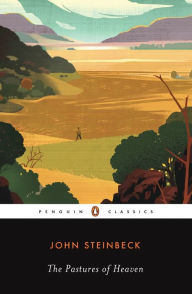
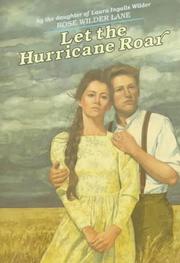
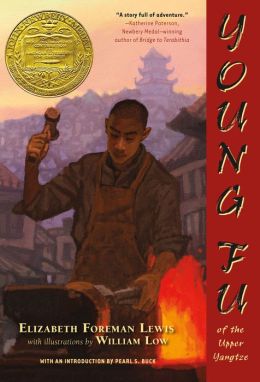

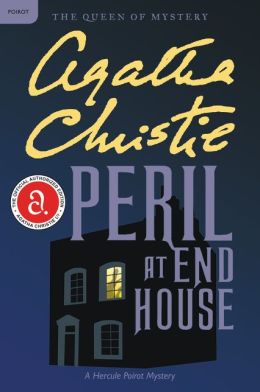
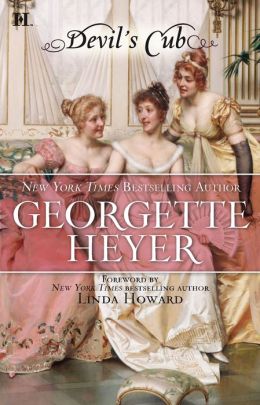
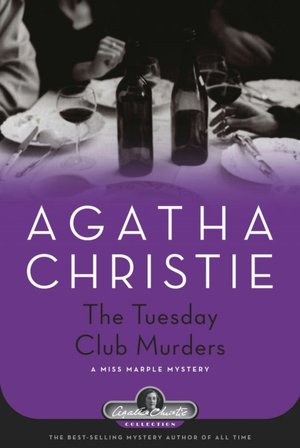


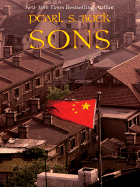

I have been wanting to reread this for years and just never seem to get around to it... One day!
These were the only books that languished on my bookshelves as a child. My grandmother tore through them and, I'm pretty sure I was given the whole series more for her enjoyment than mine. I did read this a few years ago and I can't remember what my rebellion against this book could have been. I may not race to devour the series, but I definitely shake my head about my refusal to read them as a child.
I'm torn between Little Town on the Prarie and The Long Winter as my favorites. These are a hard sell now, but there are some of us who have very fond memories of them.
These are comfort reads for me as well. I love reading about simpler times, when people worked hard physically and seemed more reflective and less materialistic.